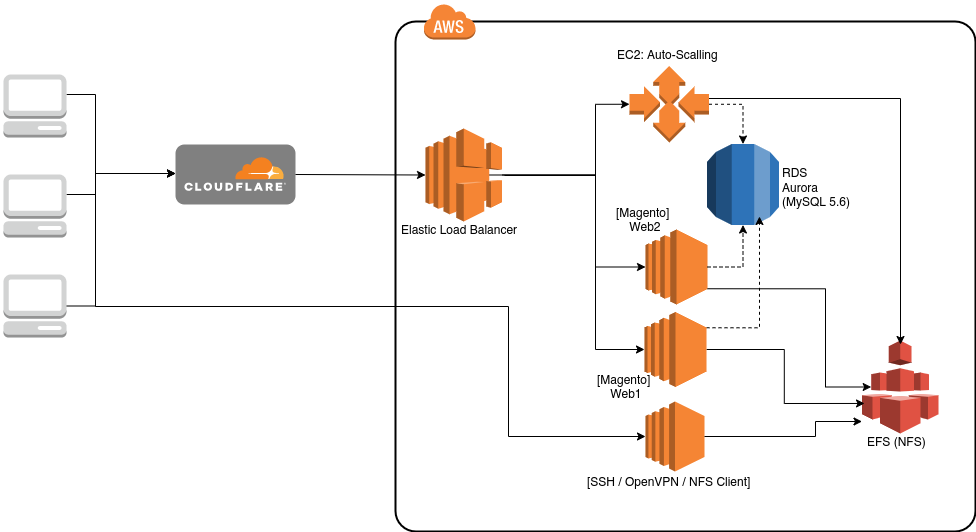Solution
A new magento 2 shop on AWS with LB, EC2, Amazon Aurora, EFS and
Cloudfare.

A full fledged magento shop for a famous clothing brand from South India who wanted to revamp their existing site after it crumbled under the immense traffic.
Working model: Outsourced model
Team size: 4
Duration: 3 and a half months
Current status: on support and maintenance.
During the lockdown there was a surge in site traffic crumbling the servers impacting the page loading time and exposing a lot of bugs. Patching the existing site was becoming a pain as the issues were reported continously and the bounce rate was climbing resulting in business loss.
A new magento 2 shop on AWS with LB, EC2, Amazon Aurora, EFS and
Cloudfare.

The new website was completed in phases as shown below.
Analysing the existing site
to identify all the issues, improvements and new additions. This
immensely helped with tailoring a solution for the client rather
than providing a general solution.
Duration : 1 week. (Google analytics was already present
on their existing site)
27 made use of the
following tools on the
client's existing site during this phase:
formulating a robust strategy on
all the 3 fronts - Infrastructure, backend and
frontend.
Duration : 3 weeks.
The following activities were undertaken during this phase:
Scrum methodology to go live in 2 months.
Each sprint was a week long and we had 8 sprints.
Duration : 8 weeks.
It was clear that we needed to do the following to be able to go
live in 9 weeks:
making sure the go live is smooth
with phased approach and is monitored
so that new as well as repeat customers seamlessly
adapt
to the new rollout.
Duration : 1 week.
The following activities where undertaken as part of go live: